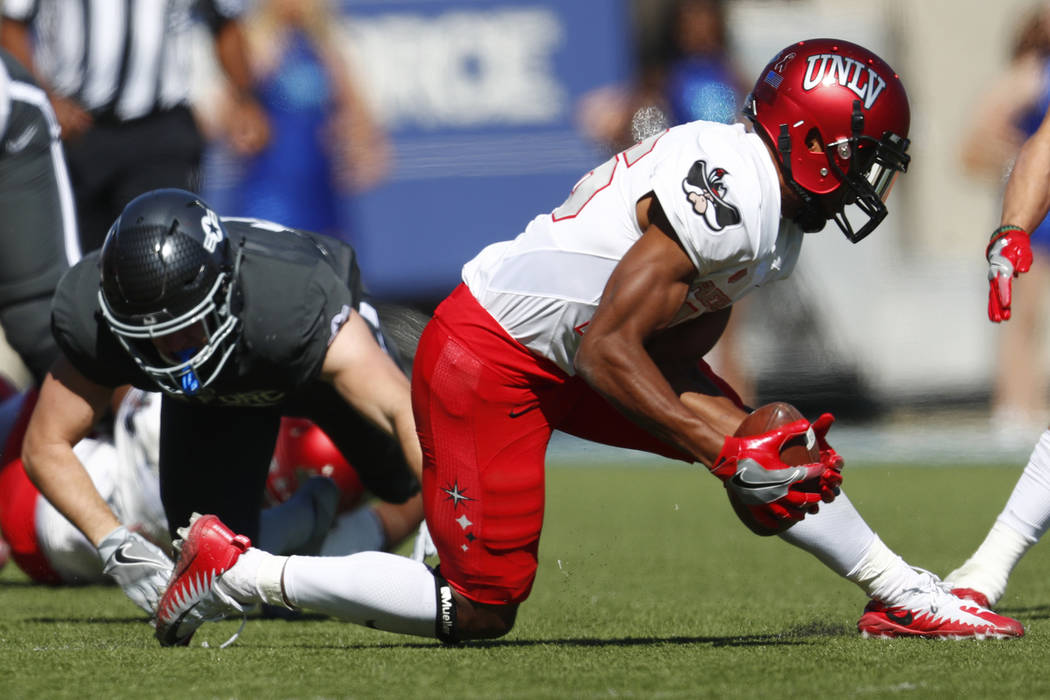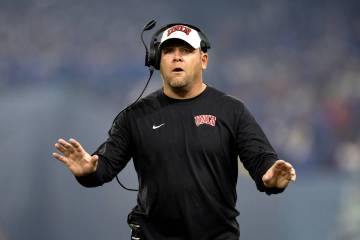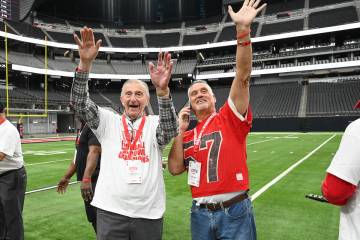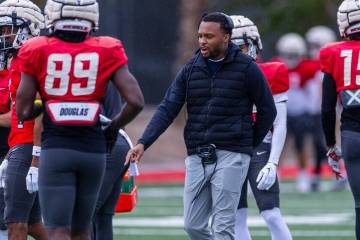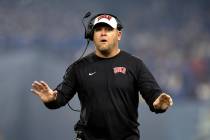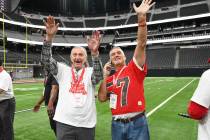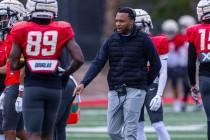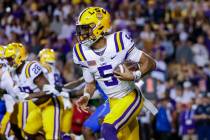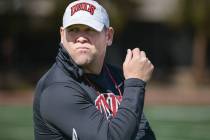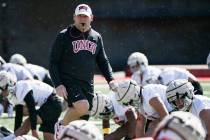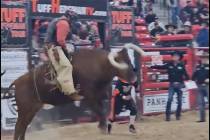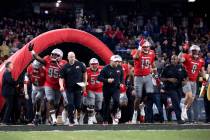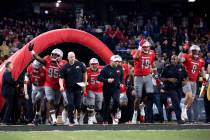Breaking down UNLV’s game against Air Force
Quarterbacks
UNLV’s Max Gilliam has thrown five touchdown passes in the second halves of both of his starts. He needs to prove he can throw that well against an opposing team’s starters. Air Force appears to be down to its third-team quarterback in Isaiah Sanders, but for the Falcons, it’s plug and play.
■ Advantage: Air Force
Running backs
Having Lexington Thomas healthy after a head injury Saturday at Utah State is huge for UNLV. He averages 5.7 yards per carry. But without quarterback Armani Rogers the past two games, the Rebels’ running game has combined for 197 yards after not producing less than 300 over each of the first four weeks. The Falcons average 248 yards, but only 3.9 per rush.
■ Advantage: UNLV
Receivers
The UNLV receivers are coming off their best game, and freshman Tyleek Collins looked like a breakout star with four catches for 139 yards and a 79-yard touchdown at Utah State. Air Force isn’t know for its passing game, but Marcus Bennett averages 19.8 yards on 12 receptions.
■ Advantage: UNLV
Offensive line
This was thought to be an area of strength for the Rebels, but the line has given up 23 sacks. Some of that is on the quarterback holding on to the ball, but UNLV needs to improve there and in run blocking. Air Force focuses primarily on run blocking, and it has done a mostly adequate job.
■ Advantage: Air Force
Defensive line
Air Force’s run defense allows just 101.2 yards per game and 3.2 per carry. Jordan Jackson has made 8½ tackles for loss, including 1½ sacks. The Rebels have tried different combinations, even switching linebacker Gabe McCoy to end and moving end Jameer Outsey to the interior. They had early success up front, but are coming off a couple of rough weeks.
■ Advantage: Air Force
Linebackers
McCoy is technically a linebacker, but that might be in name only. Still, between him and Javin White, they have 14½ tackles for loss, including four sacks. Air Force’s Kyle Johnson and Brody Bagnall have a total of seven tackles for loss, including half a sack.
■ Advantage: UNLV
Secondary
Opposing teams are taking shots deep against the Rebels, and it’s up to the secondary to rise to the challenge. UNLV has given up 15 touchdown passes while intercepting just one. The Falcons have had their own problems, allowing quarterbacks to complete 60.7 percent of their passes for 232.2 yards per game and 10 touchdowns.
■ Advantage: Air Force
Special teams
UNLV’s Evan Pantels has made 2 of 4 field goals and 23 of 24 extra points, and Hayes Hicken averages 44.6 yards per punt. The Falcons have used two kickers, who have combined to make 3 of 6 field goals, and two punters who average 37.3 yards.
■ Advantage: UNLV
Intangibles
Air Force is 0-3 in Mountain West play, but don’t be fooled by that record. The Falcons lost at Utah State by 10 points, UNR by three and at San Diego State by four.
■ Advantage: Air Force
Handicapper’s take
■ Bruce Marshall (goldsheet.com):
Air Force 38, UNLV 20 —Normally, we’d say it’s about time for UNLV fans to get ready for hoops, but not sure that’s a great idea in 2018. Whatever, another Rebels football season seems to be teetering on the abyss. Despite best efforts, a leaky defense (55 points per game allowed last two) is not compensating for strike force now minus dual-threat Rogers, as bowl eligibility might be gone by the time he’s ready to return sometime in November. The Force is off of its two best games of year as Falcons defense finds traction, lending hope that coach Troy Calhoun can still get to his 10th bowl in 12 seasons at the helm.
More Rebels: Follow all of our UNLV coverage online at reviewjournal.com/Rebels and @RJ_Sports on Twitter.
Contact Mark Anderson at manderson@reviewjournal.com. Follow @markanderson65 on Twitter.



